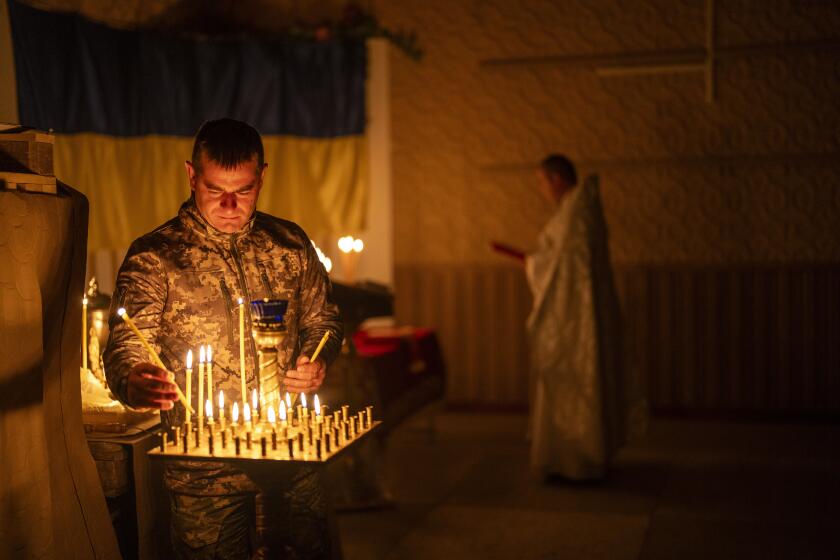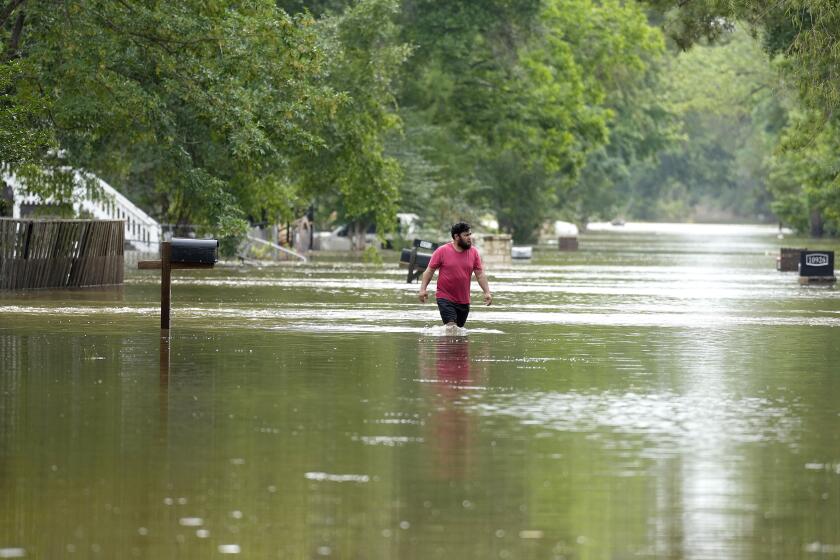‘Dirty Air Club’ may be growing
Many areas of the United States that meet existing smog standards could be declared out of compliance under proposed new ozone levels announced Thursday by the Environmental Protection Agency.
Under court order to update ozone standards for the first time in a decade, EPA administrator Stephen L. Johnson proposed tightening them slightly in response to mounting evidence of health risks. The standards would require hundreds of counties and municipalities, including major cities in the Northeast and Texas and inland areas of Northern California, to adopt new smog controls.
“Based on current science, our current health standard is insufficient to protect public health,” said Johnson. “Based upon the outstanding input I received from our clean-air science advisory committee, and our world-class environmental staff, I concluded that there was no scientific justification for retaining the current standard.”
Still, his proposal falls short of what was unanimously recommended by the science advisory committee as well as his own staff. Medical groups, environmentalists and some members of Congress criticized Johnson and his senior policy advisors for not acting more aggressively.
“In issuing the standard today, EPA is ignoring the advice of their own staff, the advice of EPA advisory committees, the opinion of the medical and scientific community,” said Dr. David H. Ingbar, president of the American Thoracic Society. “More importantly, EPA is ignoring all the kids who will be spending part of their summer in the hospital emergency room from asthma attacks caused by ozone pollution.”
“Smog kills, and EPA should be doing everything it can to save lives and protect the health of our children and families,” said Sen. Barbara Boxer (D-Calif.), who chairs the Environment and Public Works Committee. “Instead of listening to science, the administrator seems to be intent on listening to the wish lists of polluting industries. The final ozone rule must protect clean air and public health, period.”
Ozone is formed when nitrogen oxides, volatile organic compounds and other chemicals emitted from smokestacks and tailpipes swirl in hot summer sunlight, forming brown smog.
Johnson replied to critics that “the law does not require me to pick the lowest level. It requires me to do what is requisite to protect public health and the environment ... and as our proposal points out, the task before us is to neither over- nor under-regulate.”
Johnson also said he would consider arguments for maintaining the current standards, which pleased industry groups that say his proposed regulations could cost billions of dollars. Johnson has until March to make his final decision, which he noted under the Clean Air Act must be based on health risks alone, not the costs of cleaning up pollution.
Industry representatives, including Jeffrey Holmstead, the EPA’s former assistant administrator for air and radiation, disagreed that research shows sharply higher risks from ozone. Instead, Holmstead maintained that though new studies show minor increases in lung tissue damage and possible premature deaths, there were no definitive links between mortality and ozone exposure.
Holmstead is now a consultant at the Washington, D.C.-based law firm of Bracewell & Giuliani, which represents power plants, refiners and other businesses that say the current standard is adequate.
“EPA is being prudent by soliciting comments on a range of potential ozone standards, including the possibility that the current standard be left in place,” said John Kinsman, director of air quality programs at the Edison Electric Institute. “The agency needs to make sure that any additional requirements imposed on states and local communities will produce real public health benefits. Many states still are struggling to comply with the existing ozone standard. Some areas have indicated that they won’t be able to achieve the current standard no matter how hard they try.”
But environmentalists said industry made the same claims of intolerable costs a decade ago, and had been proved wrong.
“What in fact happened over the past decade is that cost-effective, sensible measures were adopted that had far-reaching benefits in enabling millions of Americans to raise their families in neighborhoods and communities where the air is now safer to breathe,” said Vickie Patton, senior attorney with Environmental Defense.
Urban areas around New York, Baltimore, Philadelphia, Houston, Dallas and San Francisco could all be affected, said Holmstead, as would Sutter County and Chico in Northern California. “Essentially, any significant city that now meets the standard will probably not meet the new standard, just because it’s so low that essentially any urban area will likely fail,” he said.
But many local regulators such as the South Coast Air Quality Management and Bay Area Air Quality Management districts in California said they would support tougher regulations.
Greater Los Angeles and the Central Valley already have the nation’s worst ozone pollution and have struggled unsuccessfully for years to meet the current rules.
The California Air Resources Board is scheduled to vote today on a state plan for reducing ozone emissions from mobile sources, which environmentalists and Southern California air quality officials say are inadequately regulated.
San Francisco would still meet the tougher standards, but inland communities of Santa Clara County, such as San Martin and Los Gatos, probably would not.
“Where the smog forms are those places where the temperature gets to 112 degrees,” said Karen Schkolnick, spokeswoman for the Bay Area district, which oversees air quality for 7 million people in and around San Francisco.
She said the district would work hard to meet any new federal standards.
“I don’t think we believe it is impossible. We certainly believe it’s a challenge, but it’s an important challenge,” she said.
--
More to Read
Start your day right
Sign up for Essential California for news, features and recommendations from the L.A. Times and beyond in your inbox six days a week.
You may occasionally receive promotional content from the Los Angeles Times.






